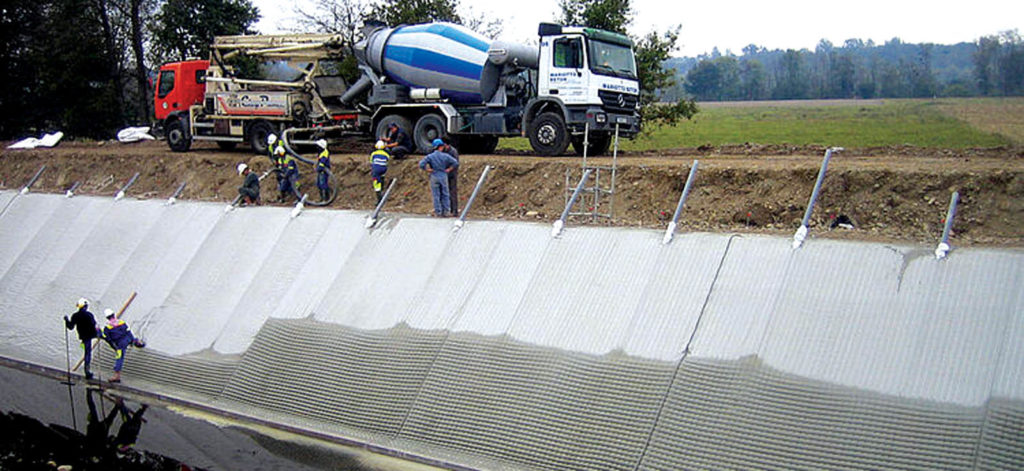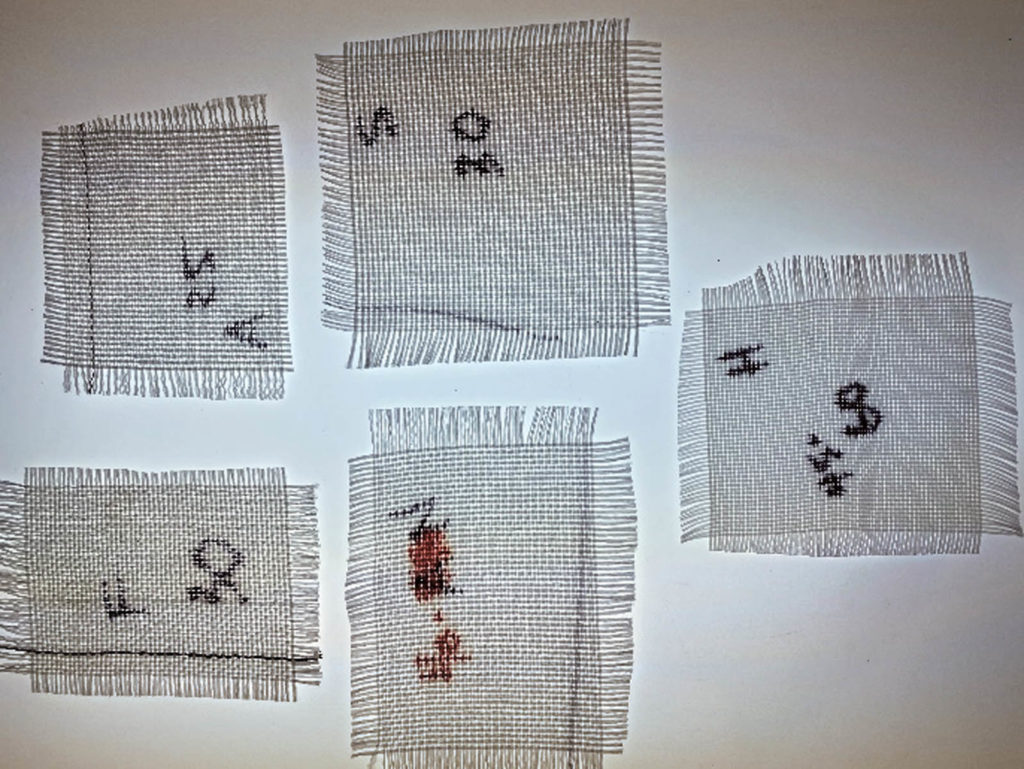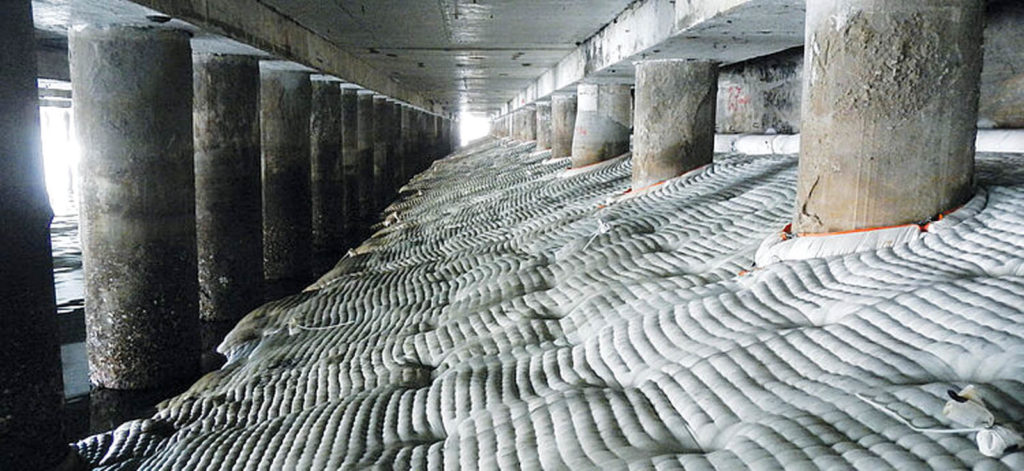By George R. Koerner

Geotextile grout filled mattresses (GGFM), also referred to (in ASTM D18.25/D35.05) as fabric-formed concrete (FFC) or fabric-formed concrete revetments (FFCR), are erosion-resistant concrete linings made from durable, permeable fabric forms that are filled with high-strength grout. GGFMs are generally sloping structures placed on shorelines to absorb the energy of incoming water. Grouted in place, they adapt to uneven contours, curves and subgrades as they are filled. GGFMs provide an economic and durable solution for erosion control, scour protection, shoreline protection and soil stabilization. They are highly effective in environmental and marine construction applications.
Advantages of GGFMs are as follows:
- Cost-effective alternative to traditional concrete slope paving, gabions and riprap
- Reduce hydraulic uplift by slowing flow velocities and reducing wave run-up
- Conform to soil contours to reduce the potential for scour
- Resist stresses associated with high-velocity flows
- Have no steel reinforcement or concrete finishing
- Do not require dewatering
- Low cost of transportation and mobilization
- Limited environmental impact

GGFMs can be used both above and underwater, by laying the fabric forms over the area to be protected and pumping fine-aggregate concrete into the forms. Fine-aggregate concrete is used in place of regular concrete because of its pumpability, strength, density and absorption resistance. They can even be colored to blend in with the natural environment.
The GGFM is a double-layered fabric that acts as a formwork to allow the injection of a high-strength grout between the layers. The geotextile is not intended to be permanent. The GGFM acts as a barrier to prevent erosion that can occur on engineering structures, including:
- Wharf and harbor embankments
- Embankment and lake linings
- Culverts, spillways and boat ramps
- Seawalls and river linings
- Bridge abutments and road shoulder protection
- Boat ramps and hovercraft pads
- Sludge lagoons and aeration ponds

The two layers of textile of a GGFM are connected via a vast array of internal restraining ties. As well as providing internal fiber reinforcement for the grout that is pumped between the layers, the length of these ties can be modified to determine the final thickness of the inflated mattress. The product provides a smooth, watertight finish with a high coefficient of friction, which can be trafficable with a low-ground-pressure vehicle.
Over the past seven months, the Geosynthetic Institute (GSI) has been working with the Florida Department of Transportation to conduct tests on five different commercially available geotextiles used in the construction of GGFMs. As of the beginning of 2021, we have created a new specification for this application. The result of our efforts can be found on our website (https://geosynthetic-institute.org) under specifications entitled GRI Standard GT16 “Specification for Test Methods, Properties and Frequencies of Geotextile Grout Filled Mattresses (GGFM).” The specification is a template of required properties for a manufacturer to meet or exceed. If a geotextile used for this application does indeed meet the requirements, it should function well over time as a GGFM. The properties listed in the specification were obtained by testing multiple commercially available products according to the latest standard test methods. The unique aspect of this specification in comparison to other specifications is the added emphasis on strip tensile testing rather than wide-width testing and percent open area (POA) testing in addition to the requirement for long-term performance testing regarding ultraviolet ray durability.
We believe that this new specification is a step forward for this technology. It provides clear instructions on the intent and performance of GGFMs. The new specification can also be used to support the costing of a project, minimize risk and improve efficiency by allowing a manufacturer to inventory material. Perhaps you will consider using it on your next GGFM project.

 TEXTILES.ORG
TEXTILES.ORG


